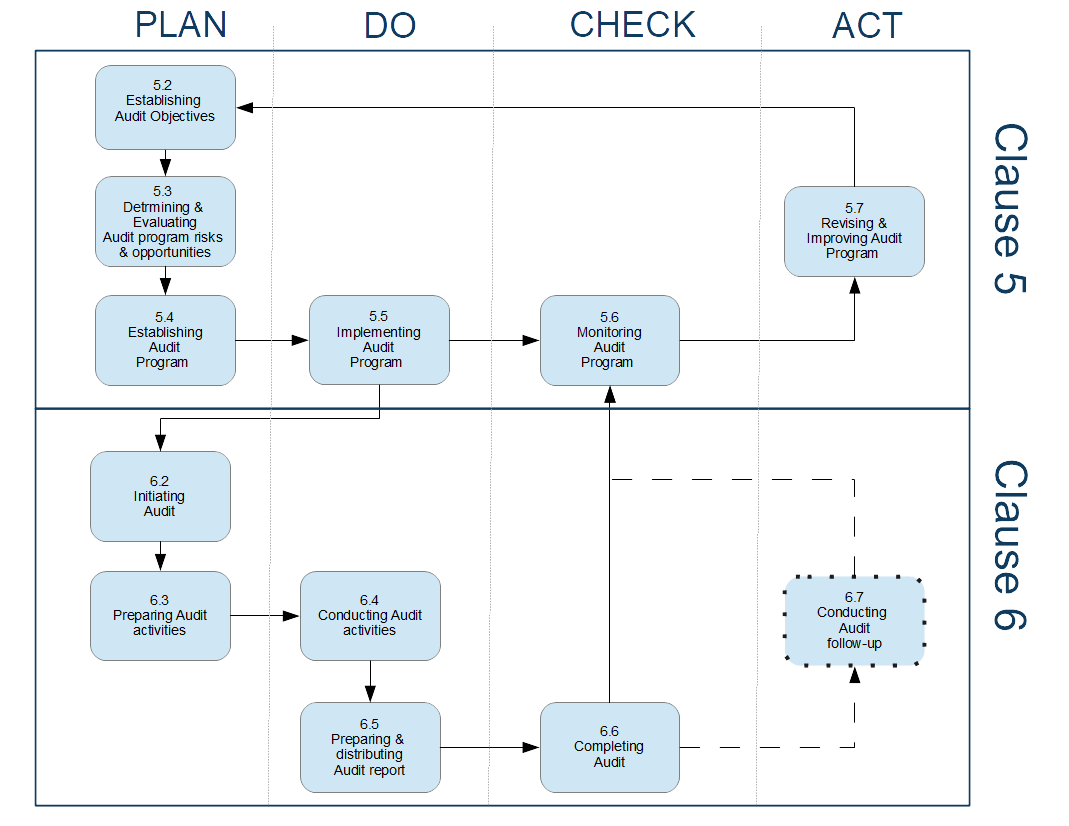| Registrar |
|
ISO Standards |
| ABS Quality Evaluations Inc. |
|
AS9100, AS9120, ISO 13485, ISO 14001, ISO 50001, ISO 9001, RC (RC14001 & RCMS), TL 9000 |
| Advantage International Registrar, Inc. |
|
ISO 9001, ISO 14001, AS 9100, AS 9120 |
| American Certification Group |
|
ISO 9001 |
| Advanced Certification Limited |
|
ISO 9001, ISO 14001, EFfCI GMP, OHSAS 18001, ISO 22716, ISO 50001, ISO 22000, ISO 17100 |
| American Global Standards, LLC |
|
ISO9001, ISO14001, ISO27001, AS9100, 9120,9110, ISO13485, ISO15288, ISO17020, ISO17024, ISO17025, ISO18788, ISO2000--1, ISO20700, ISO21508, ISO22000, ISO22301, ISO24748-4, ISO26000, ISO26702, ISO27001, ISO28000, ISO31000, ISO37001, ISO41001, ISO45001, ISO50001 |
| American International Accreditation Organization (AIAO-BAR) |
|
ISO 9001, ISO 14001, OHSAS 18001, ISO 19770, ISO 20000, ISO 22000, ISO 22301, ISO 27001, ISO 50001 |
| American Management Technology Inc. |
|
ISO 9001 |
| American Systems Registrar |
|
ISO 9001, IATF 16949, ISO 13485, ISO 45001, ISO 14001, AS 9100 |
| American Petroleum Institute Quality Registrar |
|
ISO 9001, ISO 14001 |
| AMTec Registrar |
|
ISO 9001-2015 |
| Apave Certification |
|
ISO 9001, ISO 14001, ISO 45001, ISO 3834, EN 1090, ISO 22000, ISO 18788, ISO 27001, ISO 22301, ISO 22716, ISO 50001, EN 9100, ISO 19443 |
| Asacert UK Ltd. |
|
ISO 9001, ISO 14001, OHSAS 18001, ISO 19770, ISO 20000, ISO 22000, ISO 22301, ISO 27001, ISO 50001, CE Marking/EN 1090, ISO 3834 |
| AudIT3 LLC |
|
ISO 9001, ISO 14001 |
| Aviation Suppliers Association |
|
AS9100, AS9120, ISO 9001 |
| Bluestar Management Systems |
|
ISO 9001, ISO 14001, OHSAS 18001 |
| BQC |
|
ISO 9001, ISO 22000, ISO 14001, OHSAS 18001, ISO 50001, ISO 13485, ISO/IEC 27001, ISO 37001, ISO 29990, ISO 20000, HALAL |
| BMQR Certifications Pvt Ltd |
|
ISO 9001,14001,3834,45001,50001,13485,16949,9000, 20000-1;22000,17025 |
| BSI Assurance UK Limited |
|
ANSI/AIHA Z10, AS9100, AS9110, AS9120, ASRP (ISO 14001), ASRP (ISO 9001), BS OHSAS 18001, CAAT (QMS), CSA Z1000, FSSC 22000, ISO 14001, ISO 22000, ISO 50001, ISO 9001, ISO/IEC 20000-1, ISO/IEC 27001, RC (RC14001 & RCMS), TL 9000 |
| Bureau Veritas Certification Holding |
|
AS9100, AS9110, AS9120, ATFS, ISO 14001, ISO 9001, RC (RC14001 & RCMS), SFI, TL 9000 |
| EAGLE Certification Group |
|
AS9100, AS9120, BS OHSAS 18001, ISO 13485, ISO 14001, ISO 9001 |
| Global Compliance Service |
|
ISO 9001:2015, ISO 14001:2015, ISO 45001:2018, ISO 21401 |
| Global Standards S.C. |
|
ISO 9001, ISO 14001, ISO 22000, FSSC 22000 |
| Government and Military Certification Systems, Inc. |
|
ISO 9001, ISO 14001, ISO 27001, ISO 20000-1, TL 9000, AS 9100/9110, OHSAS 18001 |
| Great Western Registrar LLC |
|
AS9100, AS9110, AS9120, ISO 9001 |
| InterConformity Assessment and Certification Company |
|
ISO 9001, ISO 9004, ISO 10001, ISO 10002, BS 8477, PAS 99, ISO 20252, ISO 14001, ISO 14004, ISO 50001, ISO 22000, ISO/TS 22002-1, ISO/TS 22004, ISO 22006, PAS 220, PAS 223, HACCP, OHSAS 18001, OHSAS 18002, OHSAS 18001, BS 18004, AS/NZS 4801, AS 8003-2003, ISO 26000, ISO/IEC 27001, ISO/IEC 20000-1, ISO/IEC 90003, ISO/IEC 27003, ISO/IEC 20000-2, ISO 31000, ISO/IEC 27005, AS/NZS 4360, ISO 28000, ISO 22301, ISO/IEC 27031 |
| Intertek |
|
A variety of ISO standards including ISO 9001, ISO 14001, and ISO 45001 |
| International Standards Authority Inc. |
|
AS9100, AS9120, ISO 9001 |
| IQS – Infinity Quality Services |
|
ISO9001,ISO14001 ,ISO45001 ,ISO22000 ,ISO18788 ,ISO41001 ,27001 ,ISO17015 ,HACCP ,FSSC ,Organic Certifications ,Halal Certifications,Food Grade Certification,SA 8000 Social Accountability Certification,Certification of Fitness for Machinery |
| Qualitivity, Inc. |
|
ISO 9001 for Quality Management Systems; ISO 27001 for Information Security Management Systems; among other popular standards |
| NSF International Strategic Registrations Ltd. |
|
AS9100, AS9110, AS9120, ATFS, BS OHSAS 18001, e-Stewards®, FSSC 22000, ISO 13485, ISO 14001, ISO 22000, ISO 50001, ISO 9001, ISO/IEC 20000-1, ISO/IEC 27001, R2, RC (RC14001 & RCMS), RIOS, SFI |
| NSAI Inc. |
|
AS9100, AS9120, ISO 14001, ISO 9001, ISO/IEC 27001, TL 9000 |
| Orion Registrar Inc. |
|
AS9100, AS9110, AS9120, BS OHSAS 18001, e-Stewards®, ISO 14001, ISO 9001, R2, RIOS, TL 9000 |
| Performance Review Institute Registrar |
|
AS9100, AS9110, AS9120, ISO 9001, ISO14001, OHSAS 18001 |
| Perry Johnson Registrars Inc. |
|
AS9100, AS9110, AS9120, BA 9000, e-Stewards®, ISO 13485, ISO 14001, ISO 9001, R2, RC (RC14001 & RCMS), RIOS, TL 9000 |
| RONET International Certification Services Ltd |
|
ISO 14001, ISO 9001 |
| SAI Global |
|
AS9100, AS9110, AS9120, e-Stewards®, ISO 13485, ISO 14001, ISO 50001, ISO 9001, R2, RC (RC14001 & RCMS), RIOS, SFI, TL 9000, IATF 16949 |
| SRI Quality System Registrar |
|
AS9100, AS9120, ISO 13485, ISO 14001, ISO 9001, ISO 45001, ISO/IEC 20000-1, ISO/IEC 27001, RCMS |
| The Registrar Company |
|
AS9100, AS9120, ISO 14001, ISO 9001 |
| World Certification Services Ltd. |
|
AS9100, ISO 14001:2015, ISO 14001:2004, ISO 9001:2015, ISO 9001:2008, BS OHSAS 18001, ISO 22000, ISO/IEC 27001, HACCP |
| |
|
|
 Click Image for a Larger ViewThe Plan-Do-Check-Act (PDCA) cycle is the cornerstone of the ISO standards. The ISO 19011 standard describes how organizations perform audits. It is designed to ensure that audits are conducted systematically, consistently, and are continuously improved.
Click Image for a Larger ViewThe Plan-Do-Check-Act (PDCA) cycle is the cornerstone of the ISO standards. The ISO 19011 standard describes how organizations perform audits. It is designed to ensure that audits are conducted systematically, consistently, and are continuously improved. 
 Reducing the cost of ISO certification requires careful planning and optimization of the certification process. Here are some strategies that organizations can implement to minimize expenses while still achieving ISO certification:
Reducing the cost of ISO certification requires careful planning and optimization of the certification process. Here are some strategies that organizations can implement to minimize expenses while still achieving ISO certification: “The number-one mistake that companies make as they ready themselves for registration is that they over document their processes. When you write more procedures than you need, you can be stuck with a burdensome system forever.”
“The number-one mistake that companies make as they ready themselves for registration is that they over document their processes. When you write more procedures than you need, you can be stuck with a burdensome system forever.”